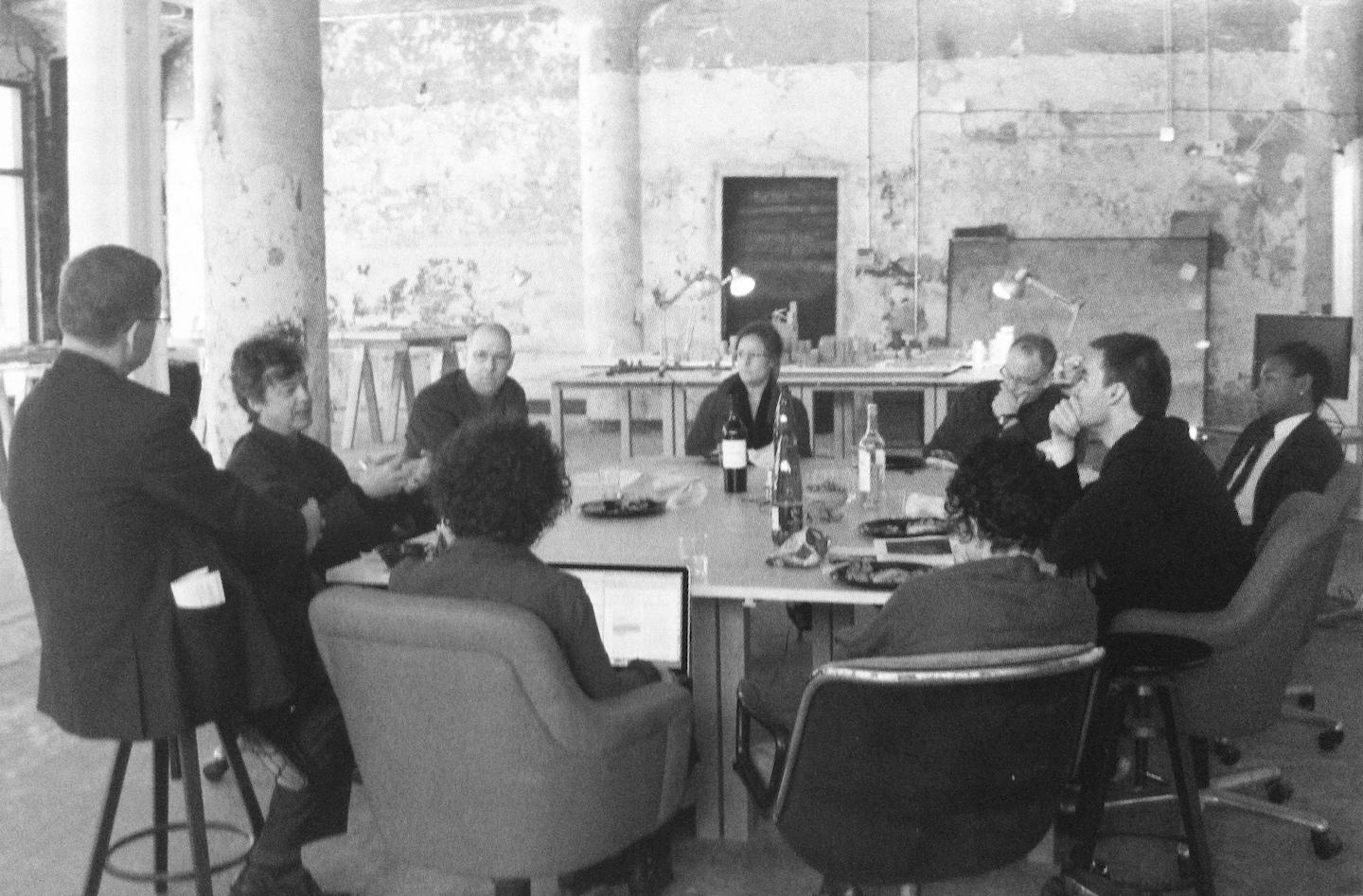“The Non-Concept City,” a discussion on urbanism with Edward Mitchell, including Robert Bruegmann, Ellen Grimes, Tim Mennel, Jonathan Miller, organized by New Projects, Chicago, March 13, 2012. The exchange was published in the Journal of Architectural Education #66.1, October 2012.
…
Ed Mitchell: I would not advocate for architecture without architects. The question is: How do you produce the open ended but ultimately ‘pointing’ architecture that Unger advocates? Often it springs up outside the domain of the planned areas of the city. Everything right now is an icon, right? So part of last night’s talk on non-concepts was my personal challenge, made in support of UIC’s (the University of Illinois Chicago) investment in the pop icon project and its populist ambitions. I wanted to offer some other projects that complement the pop icon. The non-concept city might be another more urban way of thinking.
AE: When you note in your article, “Thinking nothing can flip the field. Negotiate? I prefer not to.” aren’t you pointing to a deep identity crisis within urbanism? A situation where we’ve stopped thinking and have forgotten how to negotiate, or better, can no longer communicate to anyone other than ourselves? There might be a certain generation of architects that reads your piece and understands it as saying there’s no project; that we have become entirely mute; that we don’t have any power or expertise, and have lost the capacity to negotiate. I would find it extremely unfortunate – even dangerous. If all we have at our disposal is to say “no,” then we run the risk of writing urbanism and architecture entirely out of any relevance. Instead, we should find ways of engagement that enable us to talk back, to be part of the discussion, and to influence from within. I would like to see a trailer for the sequel of your essay – or, for that matter, the movie, Up in the Air. What happens next with Ryan Bingham, is the question for me. He lost his girl. He’s probably back in the air firing executives. I’m not entirely sure if you really really mean that we have nothing to think anymore, or that every kind of project and any kind of ambition are dead. While we have rightly grown suspicious of modernist dreams to change the world, resistance, at the opposite end of the spectrum, is equally problematic. After all, we have tried it before and it hasn’t worked.
Ed: He is literally suspended in air at the end of the film. He’s in the middle of nowhere. He’s lost his way, he doesn’t know where to land. Bingham is a modernist – he avoids conflict. He desires and projects a seamless and efficient space. If you follow Dewey’s argument that the public doesn’t exist until there’s conflict then one can see how the modern project is to eliminate conflict. As I said last night, modernism does not conceptualize public space because it wouldn’t need it if the modernist project succeeded. In Hilberseimer’s plan there is not even a traffic intersection; everything works out. In the movie, there are two parallel tracks where things “work themselves out.” Bingham works in that seamless field of the service economy airports and banal restaurants. He’s a committed modernist. The brother-in-law, is the other figure who seems more traditional. But he’s also trying to cut a real estate deal. He’s has middle-class aspirations – things could work themselves out. But the brother-in-law’s vision is exposed as being flawed, kitschy and ultimately unfulfilling. He’s an ersatz new urbanist. And so on one level, the refusal to engage that has always been the position of critical architecture, in its adversarial relationship to the city, it’s conflict, produces a form of public space but in a radical way. I would argue, thinking about Chicago, that this campus would seem to engage in the seamless idea of a modernism without conflict, but really it does not. It’s an eruption within the everyday space of the city which refuses that everyday. It’s not that Mies’s architecture doesn’t work, but it’s just that it can’t be easily digested. Crown Hall is a building you can go to a thousand times and see it differently every single time. And as an architect, that seems to be valuable. I reference Bartleby the Scrivener in the text because he works on Wall Street. His refusal to just go along has the power to make the whole world crumble around him. He may be nihilistic but he also has the capacity for destruction as a creative act.
AE: If we don’t want to go along, do we have to resist?
Ed: Yes.
AE: I don’t think we only have those two choices!
Ed: Yes, you would want to get beyond that.
…
